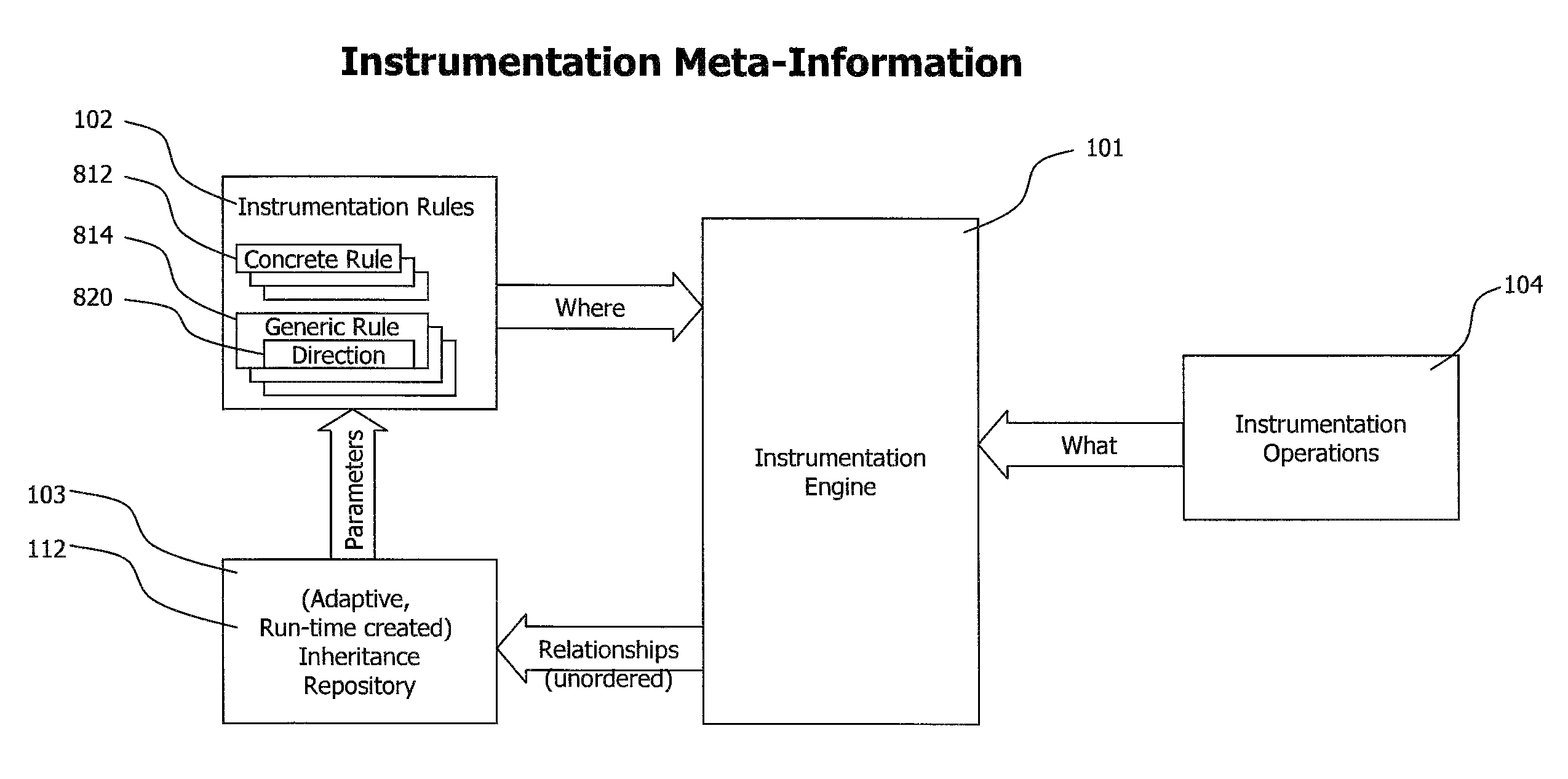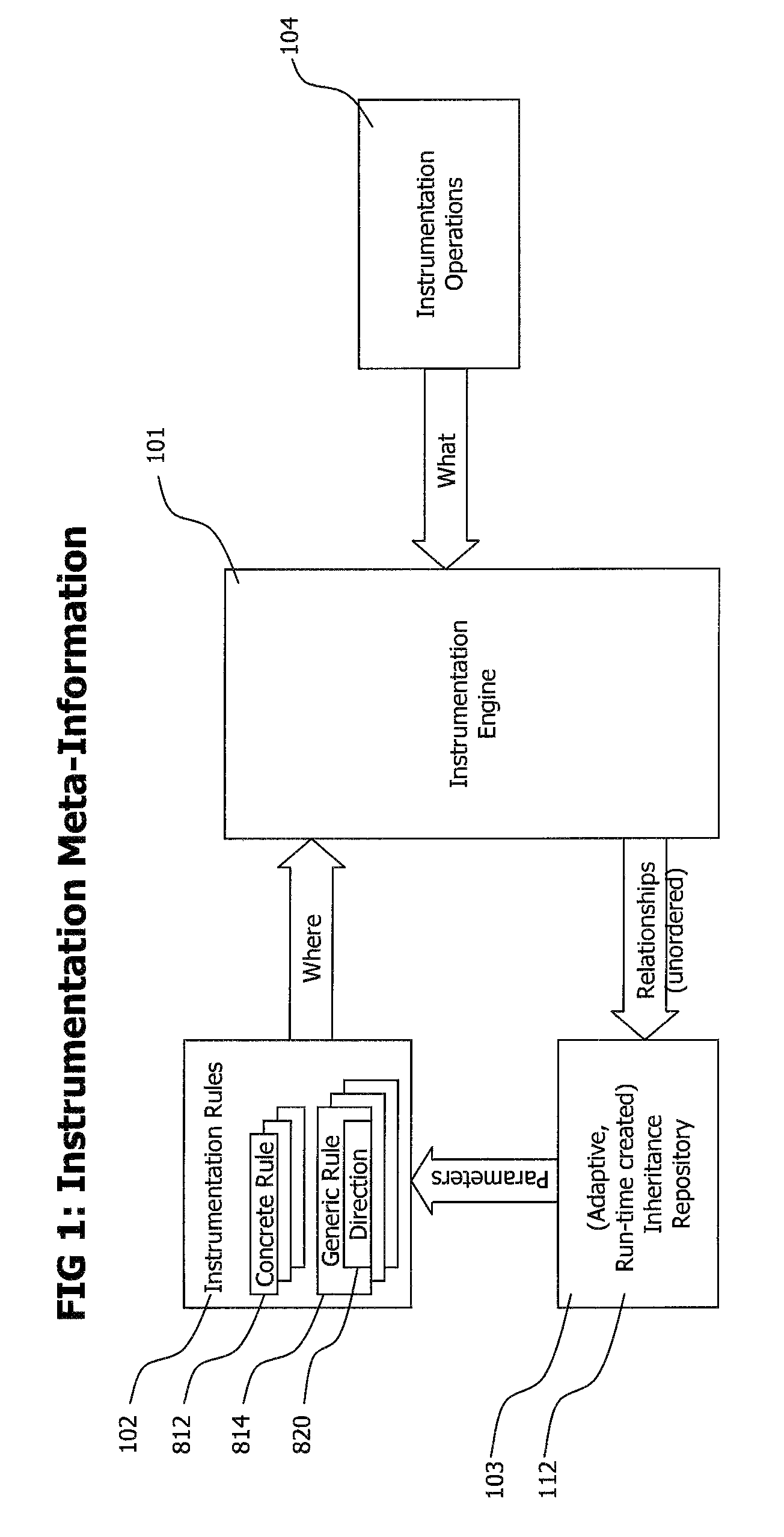Method and system for adaptive, generic code instrumentation using run-time or load-time generated inheritance information for diagnosis and monitoring application performance and failure
a technology of inheritance information and diagnostic tools, applied in the field of adaptive and generic bytecode instruments for performance monitoring and failure diagnosis tools, can solve the problems of lack of information about the internal inheritance structure of the application, inability to obtain information at this fine grained level for an application, and inability to diagnose the performance and failure of the application
- Summary
- Abstract
- Description
- Claims
- Application Information
AI Technical Summary
Benefits of technology
Problems solved by technology
Method used
Image
Examples
Embodiment Construction
[0047]Bytecode based software platforms like Sun Microsystems's Java or Microsoft's .NET framework provide interfaces to intercept bytecode loading events and to alter the bytecode of the loaded class before it is loaded into memory. Additionally those frameworks enable restricted altering of bytecode that is already loaded into the runtime environment.
[0048]Open and documented bytecode formats enable analysis of class byte code and selective altering of methods. Meta-data contained in the loaded bytecode enables retrieval of the class name, package or namespace membership, name and signature of implemented methods, direct base class, direct implemented interfaces, etc. The isolated meta-data of a class only reveals direct relationships to other classes, which is not sufficient to provide rule-based adaptive method filtering.
[0049]The present invention discloses a method to incrementally aggregate isolated class meta-data into a repository that mirrors also indirect relationships be...
PUM
 Login to View More
Login to View More Abstract
Description
Claims
Application Information
 Login to View More
Login to View More - R&D
- Intellectual Property
- Life Sciences
- Materials
- Tech Scout
- Unparalleled Data Quality
- Higher Quality Content
- 60% Fewer Hallucinations
Browse by: Latest US Patents, China's latest patents, Technical Efficacy Thesaurus, Application Domain, Technology Topic, Popular Technical Reports.
© 2025 PatSnap. All rights reserved.Legal|Privacy policy|Modern Slavery Act Transparency Statement|Sitemap|About US| Contact US: help@patsnap.com



